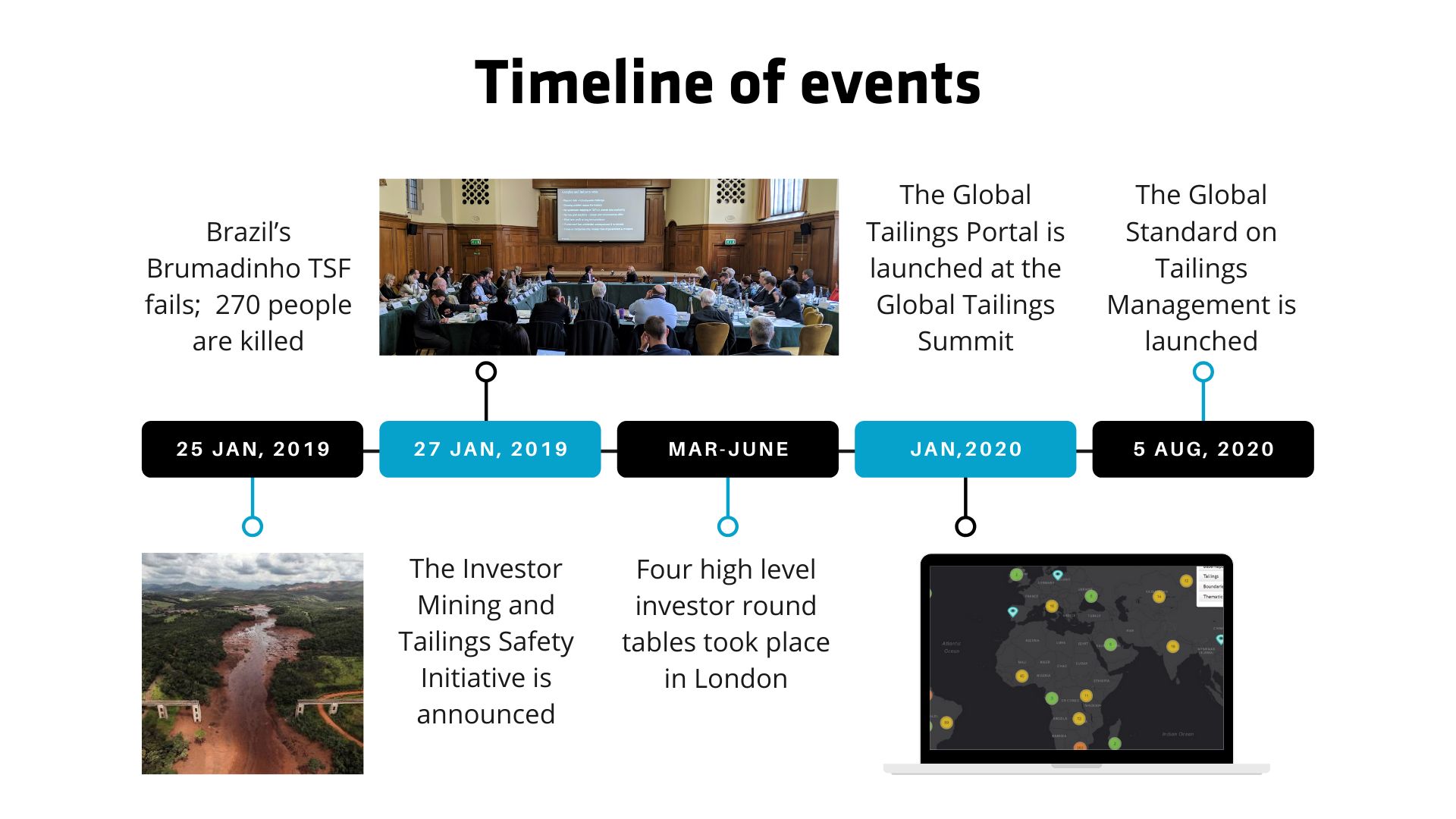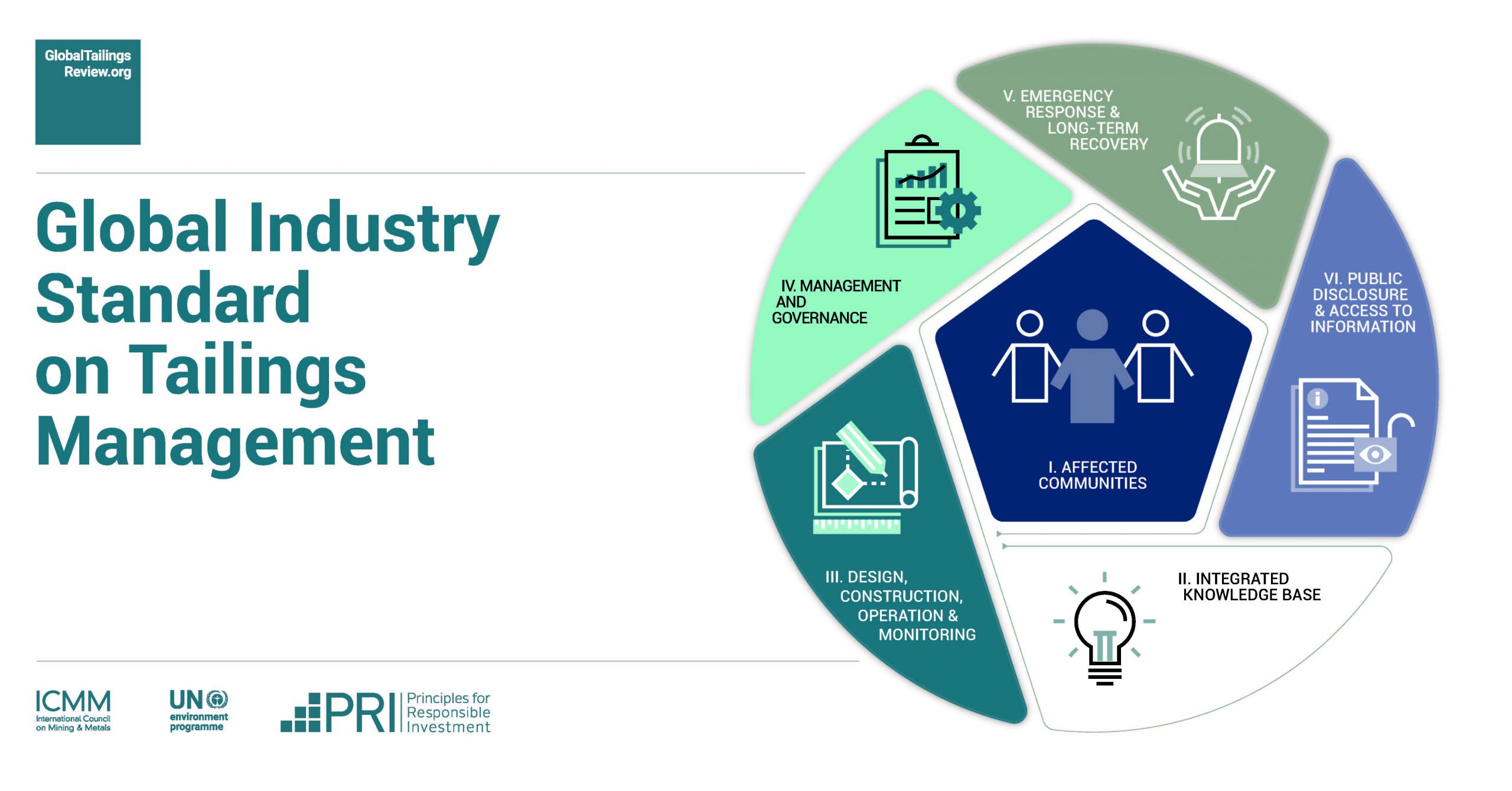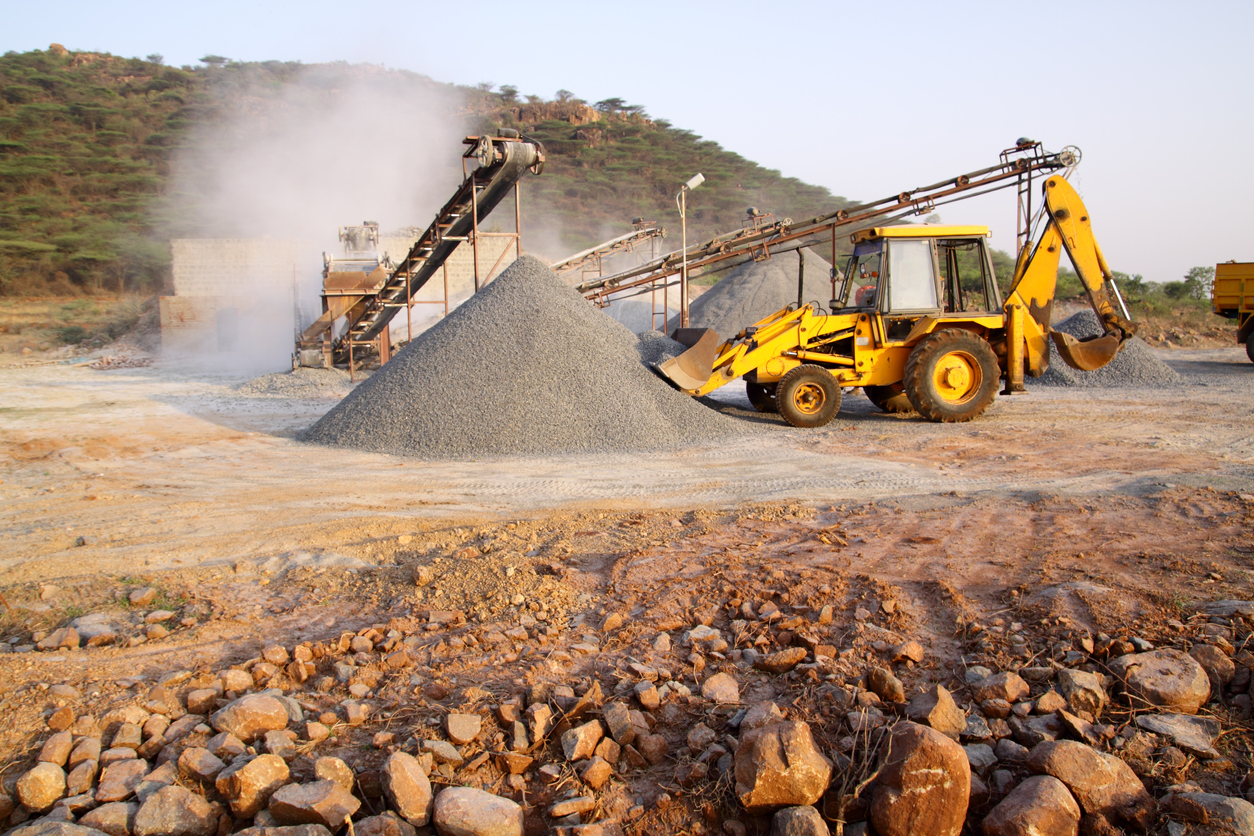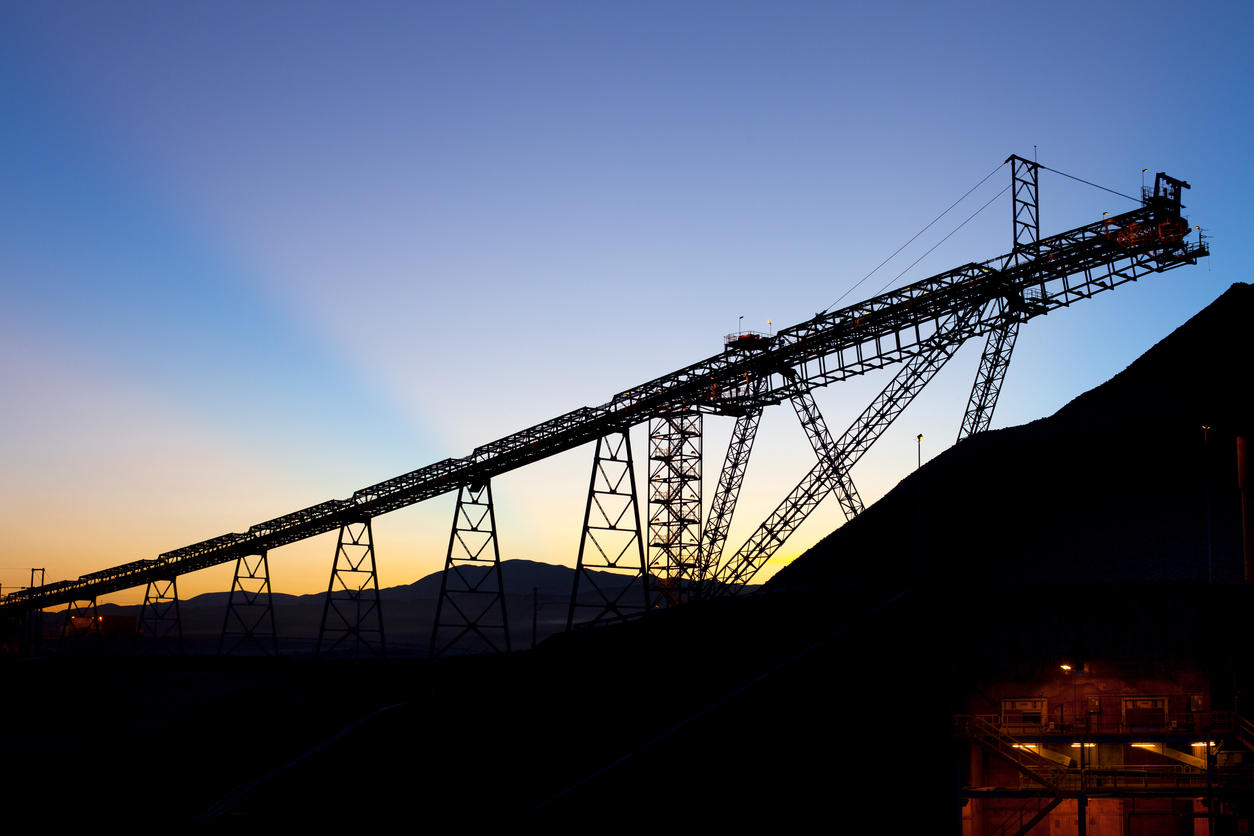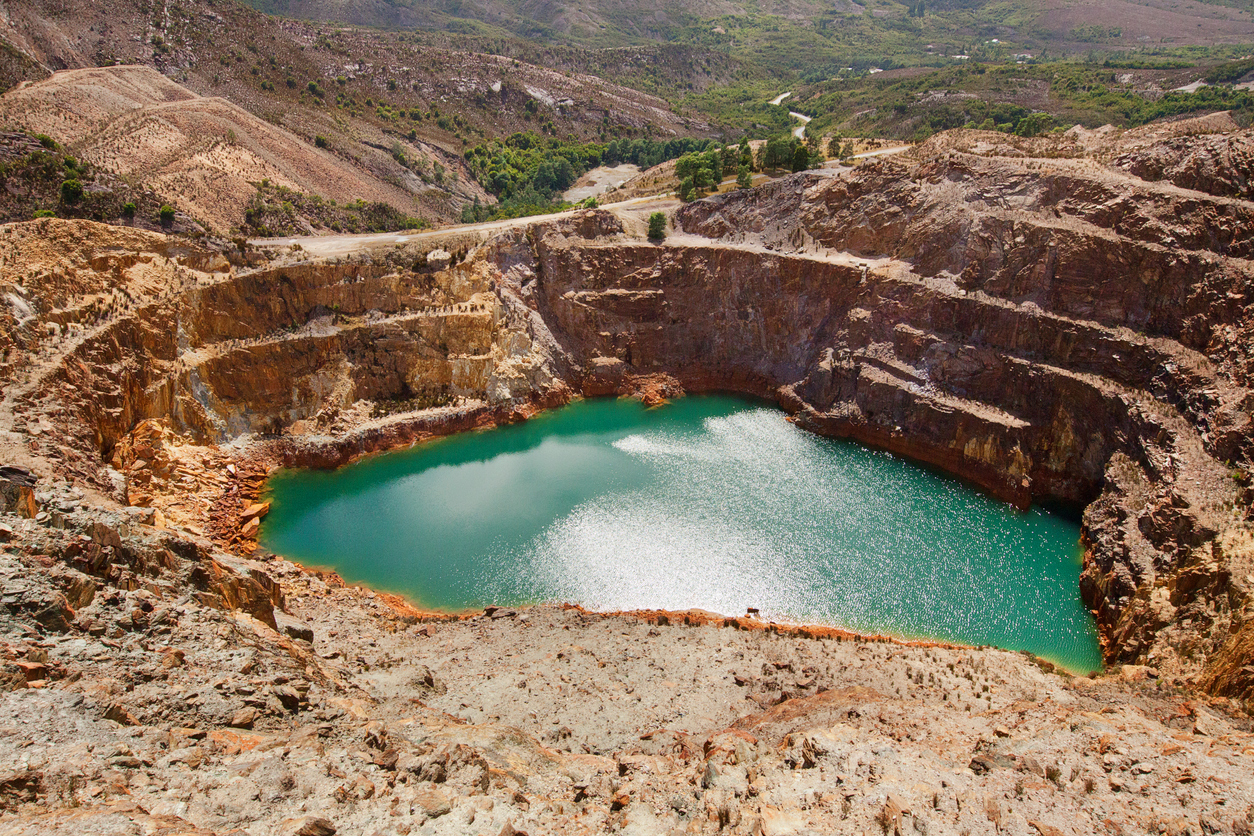Over the past 20 years there has been a series of tailings storage facility (TSF) failures. The devastating failure of Brazil’s Brumadinho Tailings Storage Facility (TSF) in January 2019, which took 270 people’s lives, was the tipping point for the industry.
Find out about the 57 major tailings dam failures (2000 – 2020)
What was the timeline of events?
Just two days after the tragic event in Brazil, a group of investors co-led by the Church of England Pensions Board and the Swedish Council of Ethics of the AP Funds announced the Investor Mining and Tailings Safety Initiative.
This Initiative brought about several interventions:
- The first was a call for a new independent, publicly accessible international standard for tailings dams based upon the consequences of failure. In response to their call, The Global Tailings Review (GTR) was announced and co-convened by the International Council of Mining and Metals (ICMM), the Principles for Responsible Investment (PRI) and the United Nations Environment Programme (UNEP).
- The second intervention saw the request of detailed disclosure on TSFs from the CEOs and Board Chairs of 726 extractive companies on 17th April 2019. The disclosure was requested to be signed off by the CEO or Board Chair and published on the company website by 7th June 2019.
Summits
During this time, four high level investor round tables took place in London between March and June 2019. This took input from locally affected communities. The goal was to enable better understanding of the scale of social and financial risks associated with TSF failures, help identify the actions required to make best practices on TSF management, and define the roles of investors, companies and other stakeholders in reducing the safety risks associated with TSFs.
In January 2020, one year on from the disaster, the Global Tailings Summit was held in London, where Professor Elaine Baker of GRID-Arendal presented the Global Tailings Portal, with over 1,900 TSFs set live on the database. These disclosures included 45 of the top 50 mining companies which resulted in information about thousands of individual tailings dams
FACTS:
- As of April 2020, 45 of the top 50 mining companies made disclosures which resulted in information about thousands of individual tailings dams/facilities being made public on company websites
- Over 86% of the mining industry by market capitalisation have responded
- All 23 publicly owned member companies of the International Council on Mining & Metals (ICMM) responded, fully disclosing tailings dams/facilities
18-months on from the disaster, the GTR successfully launched the new global standard for the safe management of mine tailings. The industry is responding to the launch of the GTS by reviewing their designs, procedures and safety processes to ensure that they are meeting the standard.
What is the Global Standard on Tailings Management?
What is the Global Standard on Tailings Management?
The International Council on Mining and Metals (ICMM), UNEP, and PRI co-convened a Global Tailings Review (GTR). They aimed to establish an international standard. On August 5, 2020, they launched the Global Industry Standard on Tailings Management. This standard seeks to achieve zero harm to people and the environment. It uses an integrated approach to tailings management. The Standard aims to prevent catastrophic failures. It also seeks to enhance the safety of tailings facilities worldwide. It embodies a step-change in terms of transparency, accountability and safeguarding the rights of project affected people.
The historic agreement which includes six topic areas, 15 principles and 77 auditable requirements, covers the entire tailings storage facility (TSF) lifecycle – from site selection, design and construction, management and monitoring, through to closure and post-closure.
Effectively Monitor your Tailings Storage Facility with K2fly
K2fly’s Tailings solution is designed to provide you with key data and insights. This enables you to effectively monitor your TSF and your environmental obligations and compliance. Our solution can be securely accessed by industry, regulators, designers and operators involved in the management of TSFs.
We offer a comprehensive and functionally rich solution. It combines regulatory (Compliance Management Software), mining waste management, stakeholder engagement, environmental monitoring, and environmental management system (EMS) tools to assist with tailings management:
- View real-time data and receive exceedance alerts
- Monitor land movement with remote sensing and InSAR datasets
- Visualise real-time LiDAR data with insights into dam movement
- Securely store and access all of your tailings data in the one place
- Upload and reference key documentation
- Visualise facilities across multiple sites in a single screen on a geospatial map
- Monitor your facilities with InSAR, LiDAR, DEM and more
- Capture a wide range of monitoring data and indicators. Includes: surface and groundwater, decant pond water levels and quality, and embankment conditions
- Capture and track obligations and conditions around your license to operate to manage your key risks and actions
- Action and task delegation for data collection with reminders
- Maintain and track environmental monitoring compliance limits and exceedances
- Manage and engage with all of your stakeholders with one central repository
- Convert your engagements into actionable outcomes
- Forecast, plan and track your sites activities using IBM’s Weather data
- Create corporate report templates and meet requests for data provision from industry groups such as ICMM, Global Tailings Portal, PRI and UNEP
- Integration capability with third party systems or public portals such as the Global Tailings Portal
Would you like to know more?
|
Don’t miss another update!

